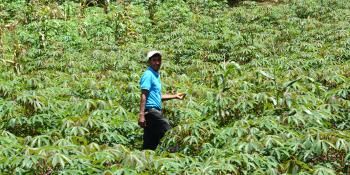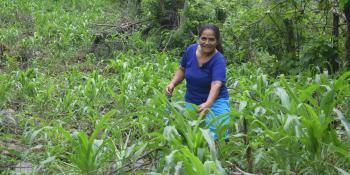1.5 °C climate report likely to cause shudders across the globe

The IPCC will release the summary of its 1.5 °C report next week, and it won’t be pretty.
We’ve long known that we must reduce emissions immediately and ambitiously in all economic sectors to limit climate change to well below 2 °C, and below 1.5 °C if possible, by achieving net zero carbon emissions between 2045 and 2060.
The 1.5 °C report will tell us that we are not acting at the lightning-fast speed or massive scale needed. Soon, limiting global warming to 1.5 °C will no longer be an option. Or will the authors find that 1.5 °C is already off the table?
In 2016, we studied a pathway of emissions that would limit warming in 2100 to no more than 2 °C and compared it to estimations for business-as-usual emissions. It was clear that mitigation in the industry, transportation, and building sectors would not be enough. Critical as it is for food production and livelihoods, we found that the agriculture sector—responsible for 11% of global emissions, not including land use change—would need to reduce emissions by at least 1 gigaton of carbon dioxide equivalents per year by 2030 to meet the 2 °C limit. This is a reduction of 11–18% from business-as-usual emissions.
Some argue that mitigation in the agriculture sector should be avoided to protect smallholder farmers or national food security. But it is smallholder farmers and food security that are likely to lose the most from climate change.
Glimmers of hope
Countries are now developing national emission reduction plans, and at least 11 of the least developed countries have set ambitious mitigation targets in agriculture. If all countries consistently choose—and meet—ambitious national mitigation targets in agriculture, agriculture could exceed the 1 gigaton mitigation target for 2 °C.
Influencing agriculture is always challenging due to the sheer number of women and men farmers and myriad context-specific production and supply chain systems, as well as the inherent—and growing (pun intended)—risks around weather, pests, etc. However, farmers willingly adopt climate-smart agriculture options that mitigate greenhouse gas emissions, increase agricultural production and benefit their businesses. New technologies are in development.
Action needed now!
The 1.5 °C report will confirm that we need climate action in all sectors if we are going to achieve 1.5 °C, or even 2°C.
In agriculture, we know what actions are needed. We need political will among investors and countries and mobilization of resources to transform agriculture at scale. Now.
The result of anything less than ambitious action in any one economic sector is likely to be catastrophic for hundreds of millions of us.
Julianna White is Program Manager, and Lini Wollenberg is the Flagship Program Leader, for the CCAFS Low Emissions Development Flagship, based at the Gund Institute for Environment, University of Vermont. Bruce Campbell is the Program Director of CCAFS.


